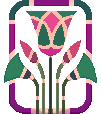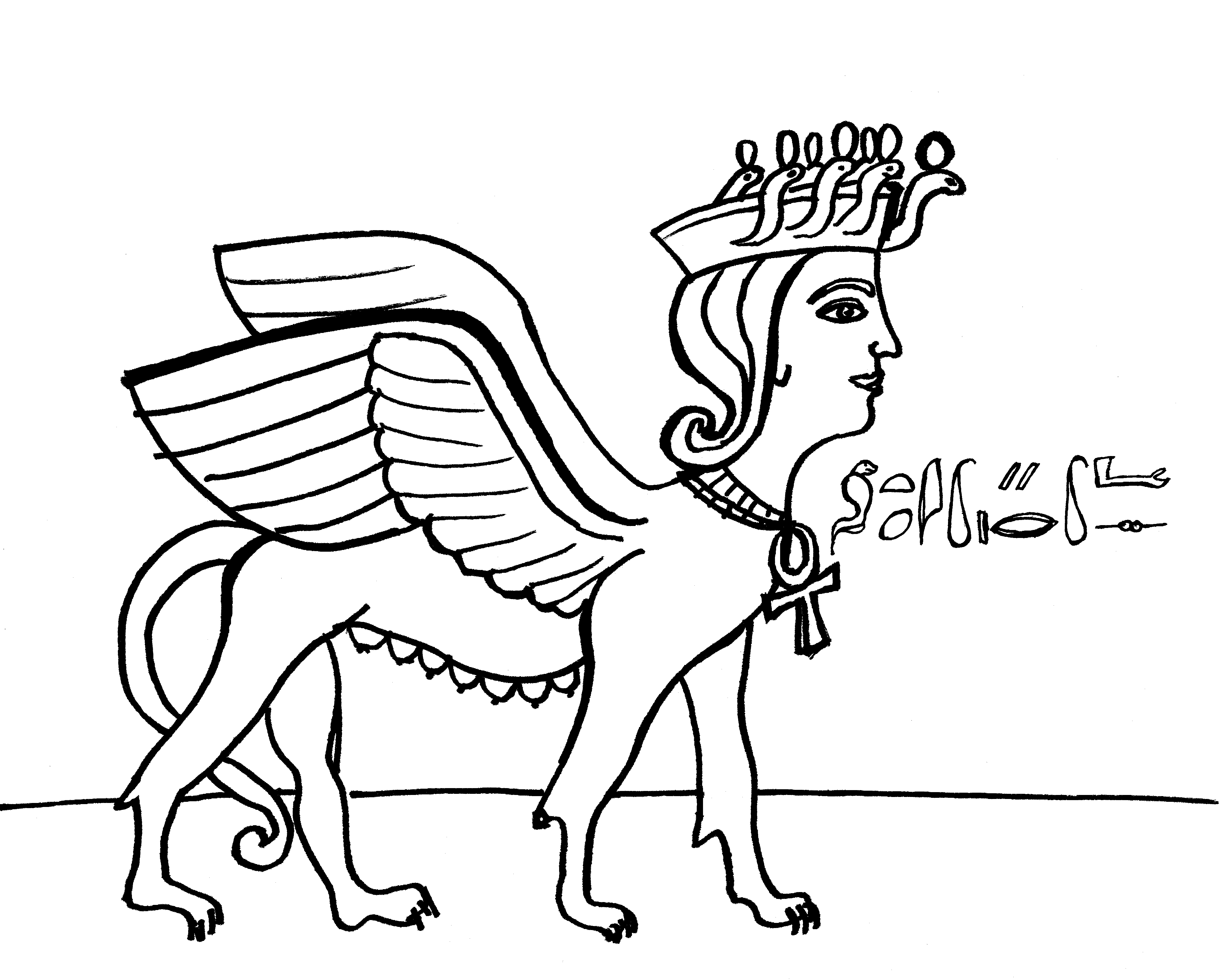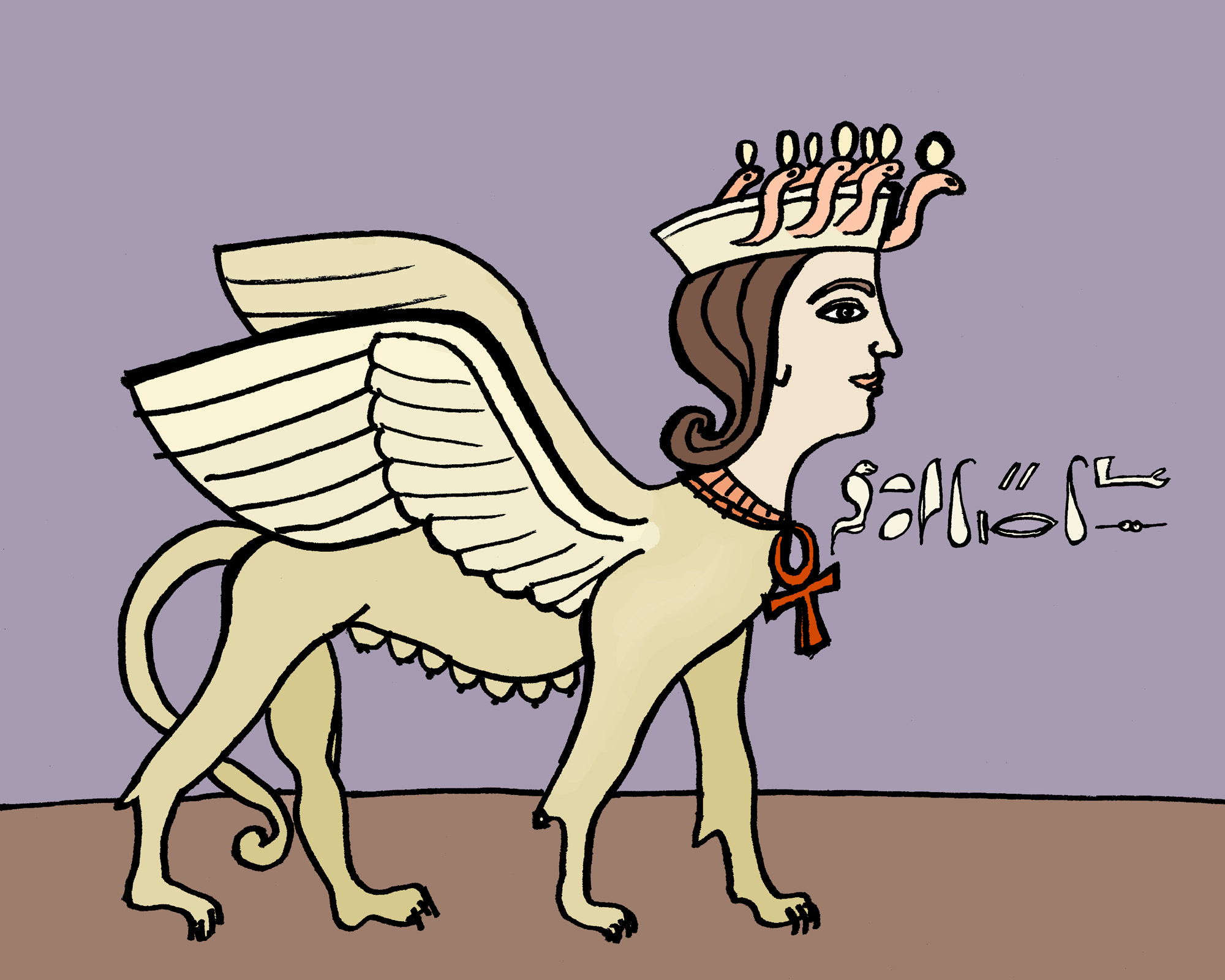
Sunday, November 24, 2013
"Astarte, Daughter of Ptah and Wife of Set"
2:37pm
Ink pen on acid free paper, 216 x 279 mm (8 1/2 x 11 in.),
Spiral rings removed after the scan.

Sunday, November 24, 2013
"Astarte, Daughter of Ptah and Wife of Set"
2:37pm
Ink pen on acid free paper, 216 x 279 mm (8 1/2 x 11 in.),
Spiral rings removed after the scan.
|
The image of a powerful goddess came to me, who could carry the title "Weret Hekau" (Great of Magic). I saw her in my mind, a winged sphinx with a human face, wearing a crown with seven plumes. I wondered who she could be, or if my imagination had invented her. During our recent storm, we'd shut down our computer for protection, so I took to one of my favorite Richard Wilkinson books, Complete Gods and Goddesses of Ancient Egypt. I was surprised to find an exact match on page 139: |
|
The Ramesside rulers established a formal temple for Astarte in their capital Pi-Ramesse. She has associations with warfare, horses and chariots, which no doubt was favored by the pharaohs in battle. But there's also evidence she held appeal for the commonwealth, too, because of stelae and scarabs that have been found in non-royal tombs. In addition to being a lion-bodied sphinx, Ramose and his wife Mutemula had a stele now at the Turin museum featuring a human formed Astarte from a frontal view, naked and standing on a lion. Astarte's throne at the Eshmun temple, Bostan El Sheikh, near Sidon, Lebanon is formed of a winged lion. A fragmentary papyrus written about the time of Amenhotep II called the "Astarte Papyrus" reveals further connections between Egyptian and Canaanite deities. In this papyrus, Astarte is called 'Daughter of Ptah'. A sea-monster named Yamm terrorized the gods of Egypt, demanding tribute. Renenutet found her boxes of treasure rejected and so appealed to Astarte for help. Astarte appeared before Yamm and sang, which indeed charmed him. She charmed him so completely, he wanted Astarte for himself as wife. He threatened to flood the entire earth if his demands aren't met. The Ennead agreed to give him a generous dowry. However, when he came to collect it, Set was there waiting for him! The Egyptian papyrus lacks an ending, but in the Ugartic version Baal (who the Egyptians assimilated to Set) defeats Yamm. So we can surmise the Egyptian version also ended with Yamm's defeat. As we can see, Astarte used 'that ol' black magic CHARM' on Yamm, proving that 'Great of Magic' is a fitting title! Furthermore, in The Contendings of Set and Horus, Astarte, along with another Canaanite deity named Anat, are called 'daughters of Ra'. In exchange for Set ceding the throne to Horus, he is given Astarte and Anat as wives. Set as a sphinx appears above Astarte, who is being given offerings by Ramesses II in a stele now at the Louvre. For my drawing, in addition to the ostracon, I also took a little inspiration regarding the wings from a Cypriot winged sphinx at the Met museum.
Further Sources:
The Gods of Egypt, by Claude Traunecker, translated by David Lorton
|
Saturday, November 30, 2013

"Color Test for Image of Astarte"
4:34pm
If I fail to get the original colored, at least I have this much.
Go Back to Archives...
Go Back to Main Journal Index Page...
Go to Index of Joan's pages...
![]()
© Joan Ann Lansberry